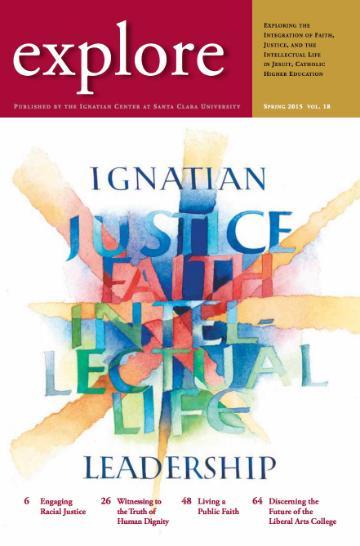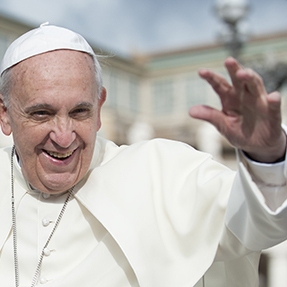
Looking at Vatican II with Pope Francis’ Eyes: Leadership and Spirituality
Excerpts from 2015 Santa Clara Lecture
The big news is Pope Francis. Pope Francis has captured the imagination of all kinds of people. Fortune magazine featured a long article about his management style. The current issue of the New York Review of Books highlights Pope Francis on the cover. My own experience, and I’m sure this corresponds with yours, is that so many people come up to me and say “Father, I’m not a Catholic, but I love your pope and I think he’s doing a great job.” Pope Francis is recognized as a real leader, not just religiously, but socially and politically too, a person very much concerned with the good of all. He’s bold, savvy, honest, transparent, and free.
Part One: Pope Francis and Vatican II
I t is often remarked that when compared with his predecessors, Pope Francis refers, cites, and quotes Vatican II rather infrequently. That is true. I think he doesn’t do that because it’s so much a part of him. It’s the way he is. It’s how he sees the Church.
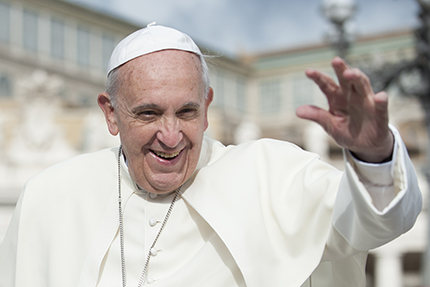
Today I will identify five focal issues of Vatican II that I think are crucial, and crucial for understanding what Pope Francis is doing. First: collegiality; second: the local church; third: dialogue; fourth: reconciliation with other religions; and fifth: servant leadership.
In 2008 I published a book on the Second Vatican Council, and I received a lot of invitations to lecture on it, and was very happy to do that, but when I finished the lectures I would think to myself, “I’m really talking about something dead in the water. It’s an interesting thing that happened, but it’s gone.” And then beginning in 2012, with the anniversaries of the Council, more invitations came, and I felt the same way. However, I don’t feel that way today. I don’t feel that way at all. I think the Council, with Pope Francis, is almost as alive as it was in 1965.
So first, collegiality. What is that? That’s the teaching that the bishops have a responsibility for the whole church, as well as for their own diocese, in union with the Roman pontiff. So, it’s a principle in the Council first annunciated for the relationship between the bishops and the pope. But if you go through the Council documents, it’s a theme, it’s a principle, that descends to all levels in the church: bishops with their priests, and priests with their people. Collegiality requires a participatory church, a People of God church. We’re all in it. We all have a voice. We all don’t have the same level of voice, but we all have a voice. How about Francis? Well, one of his first moves was to create that inner circle of nine cardinals from around the world with whom to consult. That’s one level. It’s maybe a modest step, but it’s a very significant one, a very symbolic one for him. And then there’s the whole issue of the event of the Synod on the Family—part one—which we just had this last October. What’s so special about that? It was so different from the synods that preceded it. Prior to this synod, a questionnaire was distributed to all the laity. It may not have worked as well as intended, but really, it was a very symbolic gesture. Then in the Synod itself, Pope Francis exhorted all present to speak freely, to honestly say their mind. That’s what you do when you’re collegial, people don’t need to hide their viewpoint. And, there was no prepared statement for the Synod. In past synods, the bishops have come to Rome and they found out that, under the table, they were going to be told what they had said.
Second, the issue of the local church. That’s another focal issue in Vatican II that cuts across the board different ways, beginning with the decree on the liturgy, which makes the claim that churches have some say in how liturgy is done on the local level. This is a big change from what went on before, and the Council also very much encouraged the development of episcopal conferences, and so forth. So Francis: how does he introduce himself on March 13, 2013, the day of his election? He names himself, first, as the Bishop of Rome. He highlights his place within the local church. And just recently, last week I guess it was, he made a little sort of liturgical change. The archbishops, as you may know, receive a pallium, a small vestment woven partly from lamb’s wool when they are vested into office. Until last week the archbishops came to Rome and were all invested by the pope. Last week, Pope Francis said, “No, I’ll bless the pallium, but the archbishops will be invested in their own diocese, because it’s an affair of the local church.” So it’s a very simple thing. We can’t make a great deal of it, but it says a lot about Pope Francis’ mindset, and the significance of the local church, it seems to me.
Ignatius says in the Exercises, ‘ Those who want to give greater proof of their love and to distinguish themselves, will offer themselves entirely.’ It is an utter commitment, a boldness, a full press, you might say. I think that is another correlation with Jesuit spirituality within the leadership of Pope Francis.
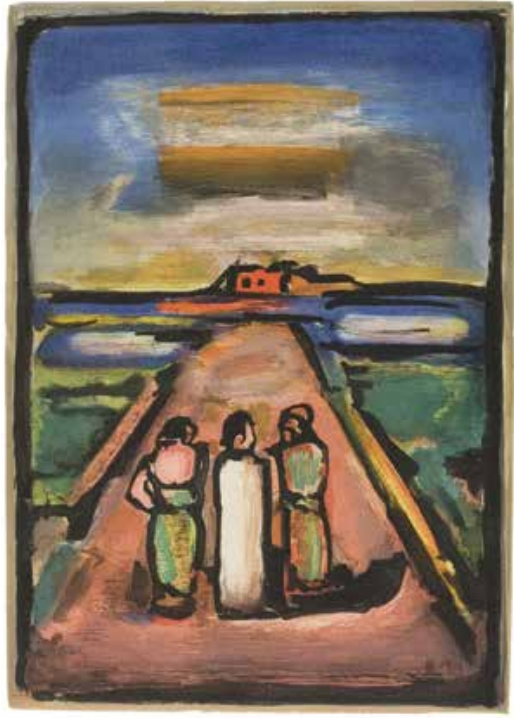
Third, the principle of dialogue. This was a word introduced into the Council by Pope Paul VI himself, and he wrote an encyclical during the Council in which that word occurs again and again and again. The Council took it up so much, that it became almost the symbol of the Council, almost a caricature of the Council— dialogue this, dialogue that, dialogue the other thing. So it’s open to abuse and so forth, but still it’s a church of dialogue, not monologue, a church of not just speaking, but also of listening. And how does Pope Francis take this up? Next week Rabbi Abraham Skorka is coming to Santa Clara. While Pope Francis was Archbishop of Buenos Aires, as you know well, he carried on an ongoing dialogue with the Chief Rabbi of Buenos Aires, Rabbi Abraham Skorka, and they talked about a wide variety of topics uncensored, and the translation was published in English. That is incredible. It is incredible, in the history of the Roman Catholic Church, for a bishop or archbishop to sit down for week after week, or month after month, and have an open, free-flowing discussion with a rabbi. To put it in minimal terms, it never was done before. It’s absolutely earth-shaking. Moreover, as Pope Francis describes it, the purpose of this dialogue is not to come to an agreement necessarily. It is not, “I’ll compromise a little bit, if you compromise a little bit.” It’s not that at all. It’s simply to get to understand the other person, to be able to sympathize with where that person is coming from, and that’s the whole purpose of it. Presumably, in the long-run, this dialogue will have a good effect. So again, it’s the listening church, and the dialogical church, and Pope Francis is an excellent example of that.
Fourth, reconciliation with other religions. Of course, reconciliation with other Christian bodies, but especially, reconciliation with non-Christian religions was hammered out at Vatican II in the document eventually called Nostra Aetate, meaning “In Our Times.” It is the shortest document of the Council, and it dealt principally with Muslims and Jews. It had terrible difficulty getting through the Council, so much so that at one point the commission that sponsored it thought they would withdraw it from the Council agenda. So what did this document do? It is also earth-shaking, I think. It gave the church a new mission. It was a mission to be an agent of reconciliation in the world. Well that’s the Gospel, right? But if you look at church history and so forth, that’s not always been the concept of the mission of the church. I have to say that Pope John Paul II and Pope Benedict XVI, really took this seriously and promoted it, but Pope Francis has taken it to another level altogether. I just keep coming back to this dialogue with Rabbi Skorka, and Pope Francis washing the feet of the Muslim woman on Holy Thursday.
Finally, the fifth principle, servant leadership. All through the Council this triad occurs: prophet, priest, king. This triad traditionally, at least since the 16th century, has been applied only to the clergy. Prophet, the one who speaks on God’s behalf; priest, the one who prays for the people; and king, the one who governs. Well, Vatican II takes that triad and applies it to bishops; it applies it to priests; and it applies it to laypeople, of course, with a slightly different nuance at every level. And in this application, the Council offers a radical redefinition of “king,” namely as servant ... a very important and radical move. This goes back to the Gospel, Jesus washing the feet of his disciples. This is how the church is called to govern. The church is the servant, the church is the one who goes out and helps. How about Pope Francis? Well, servant leadership is certainly how he looks at his office, his duties. He has, as you know, a real contempt for princely trappings. His refusal to live in the apostolic palace was a very dramatic gesture and a very symbolic gesture. We had at Georgetown a young student whose name was Luca Giani (he graduated two years ago), and he had a very interesting passport. His passport was from Vatican City, and his father is General Giani, the head of security in Vatican City. So I had the occasion to meet General Giani. At any rate, the story goes that when Pope Francis was about to take possession of his cathedral, he was in a procession from St. Peter’s Basilica over to the Basilica of St. John Lateran. Before setting out in the procession, he went up to General Giani and said “Can I ride with you?” Giani supposedly replied: “Sure. Do you want to drive too?” These are small gestures, but they mean a lot. When Pope Francis was made cardinal, there is a wonderful quotation from him and it really touched me deeply. It’s very simple and very short. He said: “Every ascent implies a descent. You must go down if you want to serve better.”
A participatory church, a local church, a listening church, a reconciling church, a serving church: five focal issues from Vatican II crucial for understanding what Pope Francis is enacting in the church today.
Part Two: How is the leadership of Pope Francis shaped by Ignatian spirituality and his life as a Jesuit?
I have three qualities of leadership that I would like to explore here. The first is that a good leader chooses the right people to be around him or around her to give advice. We recognize this instinctively with any executive we know, any university president, any president of the United States. Whom does he listen to? Whom does she talk to? So that, I think, is the first quality of a good leader, and to do that you have to have a good dose of humility. You have to be able to say: “I am not omniscient. I need help. I don’t know. I have to go to people and ask them to help me.” The second quality of a good leader is inner freedom—to not look over one’s shoulder before making decisions. A good leader needs a great level of self-possession and the ability and willingness to make moves that challenge convention—not to be afraid of criticism. Third, a good leader has to have a vision and boldness in implementing this vision. He or she has to be able to move the agenda, move the institution, or move the whatever-it-is, along.
So what about Francis? Now I’d like to make a correlation between these three qualities of leadership and the Ignatian spiritual tradition, the experience of Pope Francis as a Jesuit. First, humility and choosing the right people. Here we go to the First Week of the Spiritual Exercises, and before that, to the history of the Jesuit order. I think one of the most striking characteristics of Ignatius of Loyola’s leadership of the Society of Jesus was the way in which he chose two people to be his closest collaborators because they complemented his gifts and made up for certain lack of gifts. One of these was his brilliant executive secretary, Juan de Polanco, S.J. In Ignatius’ writings when he was superior general, it’s really difficult to sort out where Ignatius ends and where Polanco begins. Even within a document like the Jesuit Constitutions, Ignatius was able to let this better educated man and, in many ways, in terms of practical issues, more gifted man, guide him and collaborate with him. And the same thing occurred with Ignatius’ second great assistant, Jerónimo Nadal, S.J., to whom Ignatius gave plenary potentiary powers, carte blanche, to go out to all of Europe, to visit the Jesuit houses, and tell them what it meant to be a Jesuit. The result was, that by the time Ignatius died, Nadal knew the Society of Jesus better than Ignatius did. So again, for Ignatius, that was fine. This is a good example of the significance of humility and the willingness to choose people that are more qualified than oneself within the history of the Society of Jesus, within which Pope Francis has been formed.
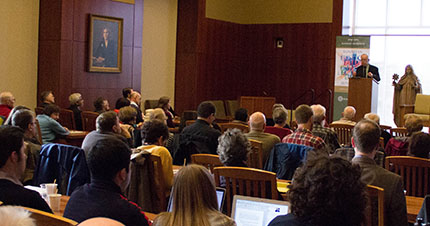
Correlation number two, inner freedom. Inner freedom is basically what the Spiritual Exercises of Ignatius of Loyola are trying to accomplish. I think we need to realize that not only has Pope Francis been a Jesuit for many, many years, he was also master of novices. He made the Spiritual Exercises, the full 30-day retreat, twice in his life, and as the master of novices, he led novices of the Society of Jesus in making the Exercises too. So Pope Francis knows the Exercises well and he knows that inner freedom, finding out God’s will and being ready and willing and able to do God’s will, to leave things behind, to move ahead, to be your own person, is one of the big fruits of the Spiritual Exercises.
Finally, the third correlation with the Jesuit tradition, boldness and courage. A key meditation in the Spiritual Exercises is the meditation on Christ the King, introduced within the Second Week of the Exercises, the week that begins to look at the public life of Jesus Christ. And at the end of this meditation, the person making the retreat is to ask himself or herself: “So what am I going to do?” Ignatius says in the Exercises, “Those who want to give greater proof of their love and to distinguish themselves will offer themselves entirely.” It is an utter commitment, a boldness, a full press, you might say. I think that is another correlation with Jesuit spirituality within the leadership of Pope Francis.
Now I want to conclude with an unusual piece about boldness and Jesuit leadership. I’ve mentioned already the Constitutions. They were written by St. Ignatius along with his secretary, Juan de Polanco, S.J. ... The ninth part of the Constitutions, just before the end, has to do with the superior general of the order, and the qualities needed in the general. In one way it’s a portrait of the ideal general. You can broaden that and say it’s also a portrait of the ideal Jesuit. The ideal Jesuit should have these qualities: he needs to be a person of prayer; he needs to be a person of solid virtue; he needs to be a person who knows how to combine severity and mildness. But then it goes on to speak about magnanimity, great soul, great soulfulness. This is unique—the very fact that this is considered a characteristic that the general should have. The second thing that’s interesting is a particular paragraph, a long paragraph, and I would like to share a part of it with you to conclude. It is not a paraphrase of the New Testament. It’s not a paraphrase of the Fathers of the Church. It’s not a paraphrase of St. Thomas Aquinas. It’s not a paraphrase of any papal document. What is it? It is a paraphrase of the Roman statesman and orator, Cicero, a pagan. I find it very inspiring myself and I think this also helps us understand Pope Francis, the kind of person he is, and his Jesuit style of leadership.
Magnanimity and fortitude of soul are likewise highly necessary for him because he must bear the weakness of many, to initiate great undertakings in the service of God our Lord. He must persevere in them with constancy, without losing courage in the face of contradictions (even though they may come from persons of high rank and power). He must not allow their entreaties or threats make him desist from what reason and the divine service require. He should rise above all eventualities, not allowing himself to be exalted by those that succeed or depressed by those that go poorly, being altogether ready to suffer death itself, if it is necessary, for the good of the Society in the service of Jesus Christ, our God and Lord
John O’Malley, S.J. is University Professor in the Theology Department at Georgetown University, Washington, D.C. A native of Ohio, he is a specialist in the religious culture of early modern Europe, especially Italy. His best known book is The First Jesuits, which received both the Jacques Barzun Prize for Cultural History from the American Philosophical Society and the Philip Schaff Prize from the American Society for Church History. He currently has two books in press. John O’Malley has lectured widely in North America and abroad on both professional and more popular topics. He is past President of the American Catholic Historical Association and of the Renaissance Society of America. He is a correspondent for the Vatican’s Pontifical Committee for Historical Sciences and holds a number of honorary degrees. He is a Roman Catholic priest and a member of the Society of Jesus.
Endnotes
- John O’Malley, S.J., “Looking at Vatican II with Pope Francis’ Eyes: Leadership and Spirituality,” lecture, 2014–2015 Bannan Institute: Ignatian Leadership series, Santa Clara Lecture, February 5, 2015, Santa Clara University. This essay is an excerpt from the lecture; a video of the full lecture is available online at: scu.edu/ic/publications/videos.cfm
- Ignatius of Loyola, Spiritual Exercises, no. 97.
- “The Kind of Person the Superior General Should Be,” Constitutions of the Society of Jesus, Part IX, Chapter 2, no. 5 [728].
